
Tims Insane Meta Universe てぃむ
A downloadable Simulation for Windows, macOS, and Linux
Tims insane meta-universe is a chemistry and physics simulation that allows you to design your own universe. Generate a random universe. Inspect the laws of physics and chemistry using tables or see the code and edit it! In this way you can create a universe with any laws you want.
INSTRUCTIONS
WASD or ARROWS : move around
Z and X : Zoom in and out.
How it works
PHYSICS The simulation consists of a bunch of moving particles with friction. The forces on these particles are determined by the other particles around it. For instance, green can push yellow and yellow can in turn pull green. This makes green chase yellow. Open the physics table to see if a color is pushed or pulled by another color.
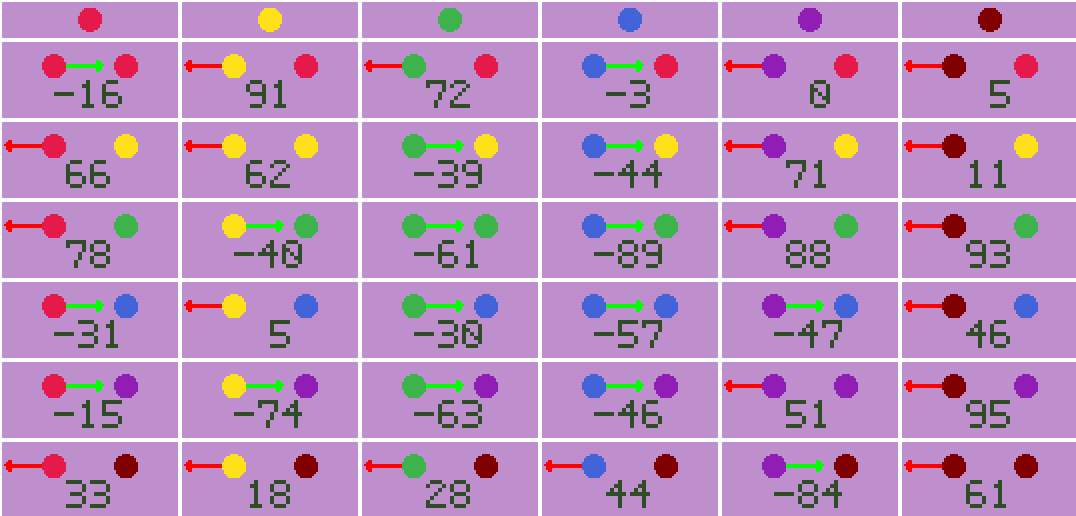
CHEMISTRY Particles can change color as well, this happens through chemistry. When two types of particles touch they change collor according to the chemistry rules. These can be seen in the chemistry table.
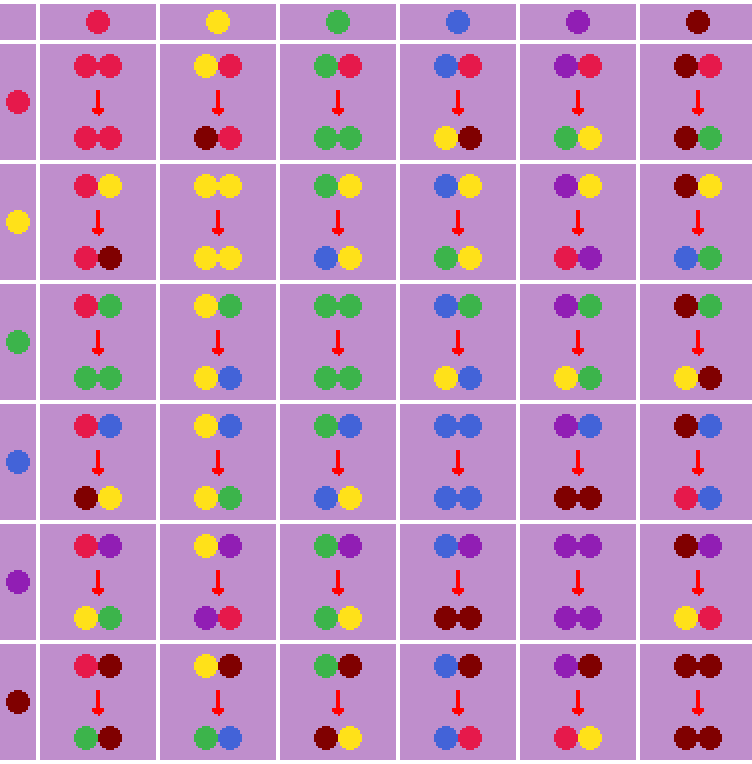
SLIDERS The sliders under realtime settings change the parameters of the entire universe.
Temperature determines how much velocity is lost, this can also be seen as friction.
Interaction force magnifies the forces between particles.
Interaction range sets the range where particles push or pull eachother. The highest force is in the middle of the range.
Reaction speed sets the probability that a reaction will happen when particles touch on a frame.
Universe Assembler
You can add or remove your own rules using the universe assembler. Open simulation settings and click on universe assembler.

First the number of types should be specified.
nTypes <# of types>
The maximum number of types in the assembler is 9. After this you can add your rules. When you make a mistake, the line will turn red and start shaking. the most common mistake is to forget the semicolon ;
REACTION: A chemical reaction can be added as
p<number> p<number> -> p<number> p<number>;
where all numbers are between 0 and (nTypes -1) When you enter an invalid number the line of code will turn purple. As an example, the line
p0 p2 -> p1 p3;
is a reaction that turns red(0) and green(2) into yellow(1) and blue(3).
ATTRACTION: Attraction between two particles can be added as
p<number> to p<number> <force>
Where number is between 0 and (nTypes-1) and force is between -100 and 100. A negative force will make the first particle move towards the second. A positive force moves the first particle away from the second. For instance the line
p2 to p3 -100;
makes green attracted to blue with a force of 100.
Saving and sharing
You can save the code to your clipboard by pressing copy. Just paste it in some text file or a word document somewhere on your computer. Paste it back into the assembler when you want to load this universe again.
| Status | Released |
| Platforms | Windows, macOS, Linux |
| Rating | Rated 4.5 out of 5 stars (4 total ratings) |
| Author | buddhaman |
| Genre | Simulation |
| Made with | libGDX |
| Tags | 2D, Abstract, Colorful, Destruction, Lo-fi, pastel, Physics, Pixel Art |
| Average session | About a half-hour |
| Languages | English |
| Inputs | Keyboard, Mouse |
| Links | Twitter/X, YouTube |
Download
Click download now to get access to the following files:
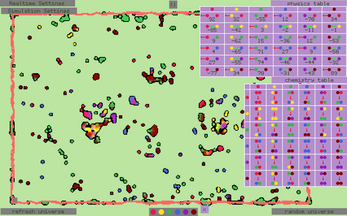
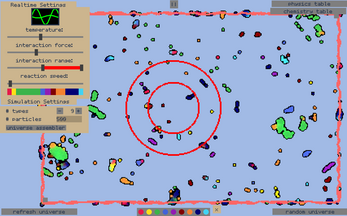
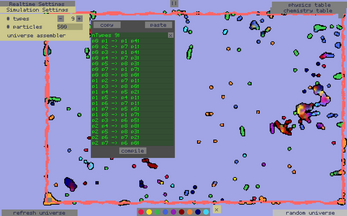
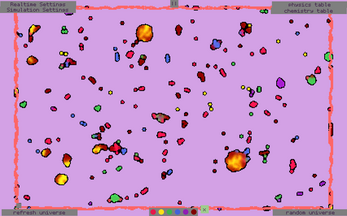
Comments
Log in with itch.io to leave a comment.
Hi! I want to congratulate you on this application. I would have a couple of requirements related to it:
- stop limiting the number of particles to 1200. This is frustrating.
- It would be nice to be able to set the interaction forces and interaction radius for each individual interaction between colors.
- stop limiting the type of particles to 10. This limits the simulation possibilities.
- please put a button to save all parameters, not only interaction forces.
- In this application, you can simulate the electromagnetic force and the hard nuclear force, however, it would be useful for research if there was an option for the gravitational force. That is, these particles should also have mass. This gravitational force should be very weak, but have an infinite range.
- Please do not limit the size of the simulation space and do not limit the zoom.
- Please make the edges of the particles thinner, as the black circle around them is very thick. It's too thick, especially if I zoom out. Why is there that black circle? Please leave the particles as they are, without surrounding them with that thick black circle.
This is fun, is this still being developed?
Yep, needs random attraction! Excited for when that comes along.
yeah, metastable filamentary structure.
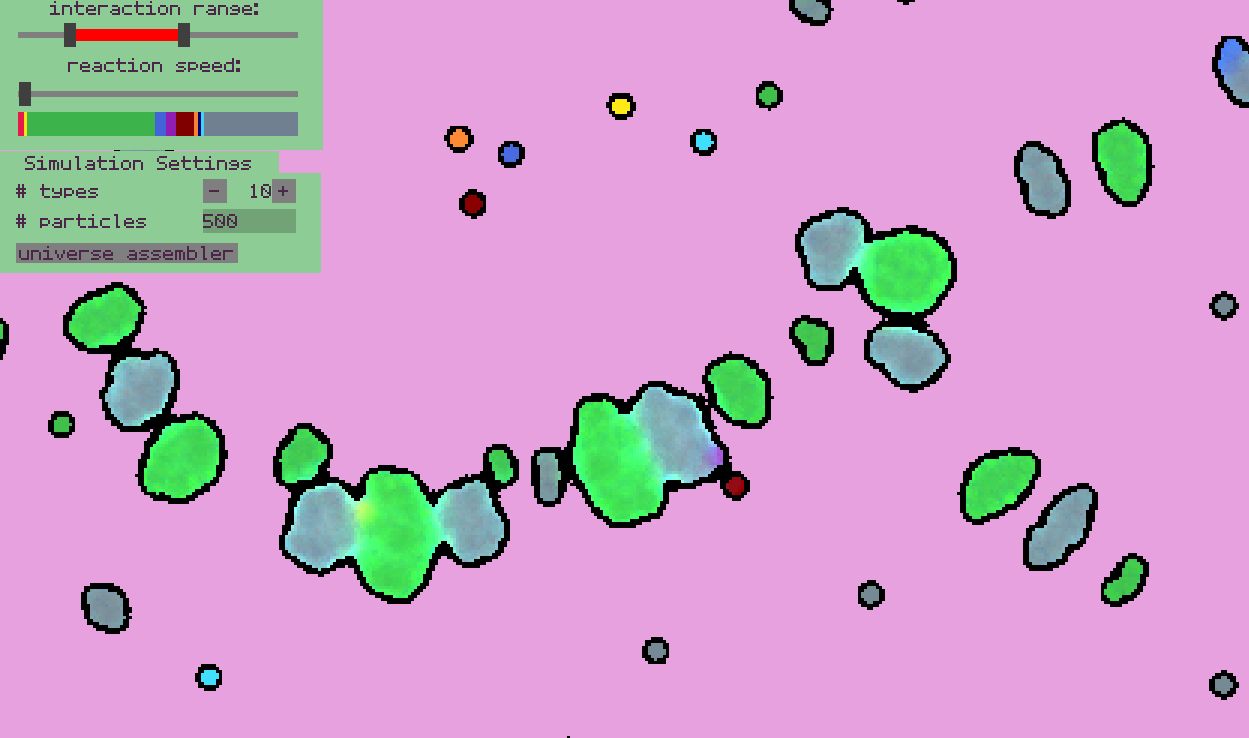
Like the universe.
Cool upgrade to the Artificial Chemistry!
Though for some reason i can't yet reproduce my favourite multi-layered aggregates (which are stable only because outer shells prevent incoming particles from interacting with the core layers),
Thanks for trying it out! In chemistry life every combination of particles had a different radius where they interacted, thats why you don't see those shells anymore. I'll add it as an option in the next version.
Waiting
I would really like a QOL update :3